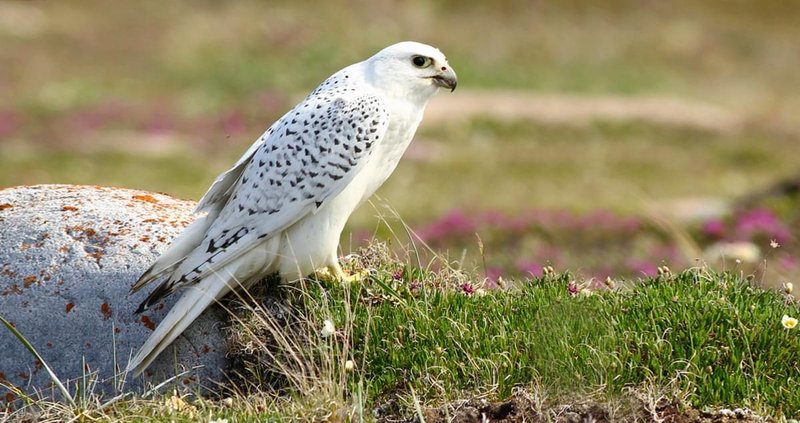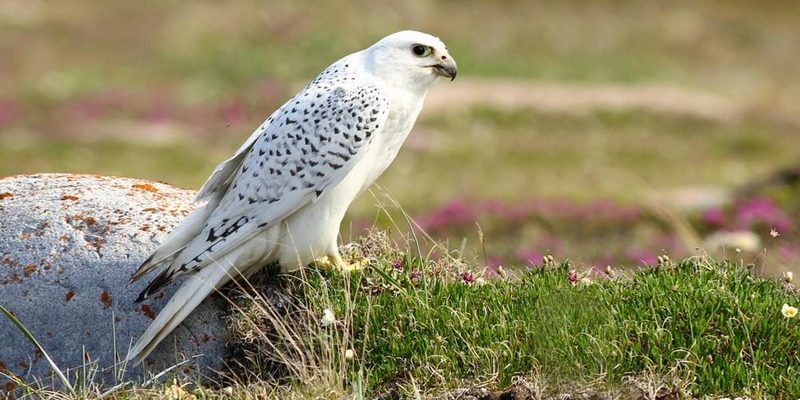
You might be wondering why the Gyrfalcon stands out among other birds. It’s not just their size or their striking plumage but also their unique characteristics and behaviors. Whether you’re a bird enthusiast or just curious about nature, get ready to be surprised by the Gyrfalcon’s world. In this article, we’ll explore ten intriguing facts about these birds, which might make you appreciate them more than you thought possible.
1. The Largest Falcon Species
The Gyrfalcon is the largest falcon in the world, and it certainly knows how to make an entrance. With a wingspan that can reach up to 4 feet, these birds command attention when they’re in flight. Imagine standing next to a creature with such expansive wings; it’s like being beside a small plane taking off. Gyrfalcons can weigh anywhere from 2 to 5.5 pounds, depending on their sex and age.
What’s interesting is that they come in various color morphs, from pure white to dark gray, which helps them blend into their icy habitats. These color variations aren’t just for looks; they play a significant role in camouflage, making hunting easier. The lighter birds are more common in snowy areas, while darker ones thrive in rocky terrains, showcasing nature’s incredible adaptation skills.
2. Masters of the Hunt
When it comes to hunting, Gyrfalcons are absolute pros. They primarily feast on small birds, like ptarmigans and even other raptors, but they’re not picky eaters. If the opportunity arises, they’ll also catch mammals, such as lemmings. Here’s the thing: they can reach speeds up to 60 miles per hour while diving. That’s faster than most cars in city traffic!
They often hunt from a perch, scanning the ground for potential meals. Once they spot something, they swoop down with impressive precision. It’s like watching a skilled marksman take aim—there’s no room for error. Their keen eyesight and remarkable agility make them one of the most effective hunters in the avian world.
3. Rare and Beautiful Plumage
Gyrfalcons are truly a feast for the eyes. Their plumage can vary widely, with some birds flaunting stunning white coats and others donning rich, dark shades. Those white birds shining against a backdrop of deep blue skies or glistening snow are truly a sight to behold.
Each Gyrfalcon’s feathers are uniquely patterned, enabling them to blend seamlessly into their environments. This variation in colors isn’t just for aesthetics; it also helps them stay hidden from both predators and prey. Honestly, nature takes style seriously, and the Gyrfalcon is a perfect example of this!
4. Unique Breeding Habits
When it comes to breeding, Gyrfalcons have some fascinating habits. They often build their nests on cliffs, high up in the mountains or even in abandoned nests of other large birds, like eagles. This choice of nesting site offers both safety and a great vantage point for spotting potential threats.
During courtship, male Gyrfalcons perform impressive aerial displays to attract females. They swoop, dive, and show off their flying skills, which is a spectacle to witness. Once they mate, the female lays about 3 to 5 eggs, which both parents help to incubate. Raising their young is a family affair, showcasing a beautiful bond between these birds.
5. Adaptability to the Cold
Gyrfalcons are built for life in some of the harshest conditions. They thrive in Arctic climates, where temperatures can plummet. Their bodies are equipped with thick layers of fat and feathers that keep them warm. Have you ever noticed how some animals seem to thrive in extreme weather? That’s a testament to their adaptability.
During winter, their hunting skills become even more crucial. They have to rely on their keen eyesight to spot prey against the snow. Gyrfalcons are masters at adjusting their hunting techniques based on weather conditions, making them incredibly efficient hunters, even in the bitter cold.
6. A Conservation Success Story
Thanks to conservation efforts, the Gyrfalcon population has made a remarkable recovery in some regions. For many years, these birds faced threats from habitat loss and hunting. However, with protective laws and habitat restoration, their numbers have stabilized.
In places like Greenland and Iceland, Gyrfalcons are no longer considered endangered. They serve as a powerful reminder of how humans can positively impact wildlife protection. It’s heartening to see these majestic birds reclaiming their territories and thriving as nature intended.
7. The Gyrfalcon’s Role in Culture
The Gyrfalcon holds significant cultural importance in various societies. In some Indigenous cultures, these birds have been symbols of strength and freedom. They have also been featured in mythology and folklore, representing power and nobility.
Historically, Gyrfalcons were highly prized by royalty for falconry, a sport that dates back centuries. Kings and nobles trained Gyrfalcons for hunting, and their ability to catch game was seen as a mark of status. Today, they still capture the imagination of bird watchers and nature lovers worldwide.
8. Global Distribution and Habitat
You can find Gyrfalcons across the northern hemisphere, especially in Arctic and sub-Arctic regions. They prefer open spaces, tundra, and high cliffs where they can spot their prey effectively. Their ability to thrive in such remote places is nothing short of remarkable.
Interestingly, Gyrfalcons migrate based on the availability of food. In winter, they seek out areas with more prey, showcasing their cleverness and adaptability. If you’re planning to go bird-watching, keep an eye out for these beautiful falcons in their natural habitats!
9. Communication and Vocalization
Gyrfalcons communicate using a range of vocalizations, from soft chirps to loud screams. These sounds help them establish territory, attract mates, and communicate with their young. When you think about it, it’s their way of chatting with each other!
During the nesting season, females often make a series of loud calls to keep their young safe and alert any potential threats. Each sound carries meaning, showing just how intelligent and social these birds can be. You might even say they have their own “language” that we’re only beginning to understand.
10. Conservation Status and Future
While Gyrfalcons are doing better in some regions, they still face challenges. Issues like climate change, habitat destruction, and pollution can impact their populations. Keeping their habitats safe is crucial for their survival.
Individuals and organizations are working hard to raise awareness and protect these magnificent birds. By educating ourselves about their needs and the threats they face, we can all contribute to their conservation. Let’s hope that future generations will still marvel at the beauty and grace of the Gyrfalcon.
In conclusion, the Gyrfalcon is an incredible creature that captures the imagination in countless ways. From its impressive hunting skills to its stunning plumage, this bird embodies the spirit of the wild. By learning more about them, we can appreciate the beauty of nature and the importance of protecting these majestic birds for the future. So, the next time you come across a Gyrfalcon, take a moment to admire its grace and strength—because they truly are nature’s wonders.

